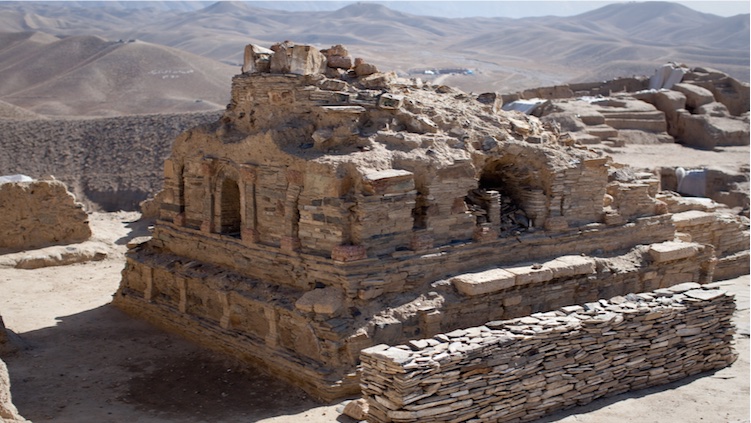A Peep Into Afghanistan’s Hindu Past
By Contriburor | Apr 03, 2015

It is commonly known that while the British, the Russians- both the Tsar and present communist regimes-, and the US met their Waterloo in Afghanistan, it was destined that the then King of Punjab in India could win and establish his rule there.
May be it was a throwback to history, since Afghanistan has traditionally been a Hindu Kingdom. The year 980 C.E. marks the beginning of the Muslim invasioninto India proper when Sabuktagin attacked Raja Jaya Pal in Afghanistan. Afghanistan is today a Muslim country separated from India by another Muslim country Pakistan. But in 980 C.E. Afghanistan was also a place where the people were Hindus and Buddhists.
The name “Afghanistan” comes from “Upa-Gana-stan” which means in Sanskrit “the place inhabited by allied tribes”.This was the place from where Gandhari of the Mahabharat came from, Gandhar whose king was Shakuni. Today the city of Gandhar is known as Kandahar. The Pakthoons are descendants of the Paktha tribe mentioned in Vedic literature.
Till the year 980 C.E., this area was a Hindu majority area, till Sabuktagin from Ghazni invaded it and displaced the ruling Hindu king – Jaya Pal Shahi. Shiva worship was widespread in Afghanistan. There was a time when the entire region was replete with hundreds of Shiva temples celebrating Shiva – Parvati worship and abuzz with Shiv chants, prayers, legends and worship.
Archaeological excavations in this region conducted by Sir Estine (an East India Company official) led to the recovery of uncountable shrines and inscriptions. He has authored four books on that topic featuring photos of icons, icons and inscriptions discovered. The photos show a sun temple and a Ganesha statue too. An Islamabad University professor Abdul Rehman has authored two books on those finds recalling the glory and prosperity of those times.
Read more:












